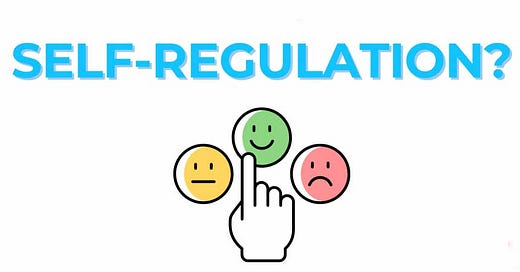The world of therapy is changing. With the continued rise of neuroscience, and the insights that it provides, I think it is now valid to say that there exist two, quite distinct approaches to therapy.
The traditional “psychodynamic” approach
The modern, self-regulatory approach
The traditional, psychodynamic approach uses as its cornerstone concept the notion of an “unconscious mind” - a repository of repressed emotions, repressed energy and unconscious dynamics, held within us. By slowly venturing into this unconscious mind, whether through psychoanalysis or other techniques, we become both more self-aware and more functional. We become aware of how our relationship with, say, our mother when we were four is now negatively impacting how we relate to women in the world today. And we can change it. We begin to experience more vitality, as the energy our psyche was previously using to keep stuff repressed becomes available for something positive.
The modern, self-regulatory approach is more about bringing our life into a better state of balance, such that we experience more a sense of control over our life and that we feel good. For example, if we are constantly in a stressed-out state, then scientifically this means our sympathetic nervous system is over-active. By making changes to things like our eating habits, sleeping habits or how we habitually breathe, we can learn to bring our parasympathetic nervous system back in, creating more relaxation in our day-to-day state.
Let’s look at some examples of the kinds of practises that you would find in each of these two approaches to therapy.
Psychodynamic
Psychotherapy and psychoanalysis
EMDR (Eye Movement Desensitization and Reprocessing)
Behavioural Therapy
Mindfulness
Rebirthing or Holotropic Breathwork
Bioenergetics
Self-Regulatory
Yoga
Gym workouts
CBT (cognitive-behavioural therapy)
Getting better sleep
Eating more nutritious food
Ecstatic Dance
I think, in truth, several of these might be considered to be in both camps. But the general idea is that we can separate practices into two broad categories - those that “dig” and those that “balance.”
The “diggers” dig into our psyche, uncovering deeper dynamics. The “balancers” try to create a more regulated and harmonious daily life for ourselves.
There can be a tendency for proponents of one of these styles to try to marginalise the other. We might see people in labcoats perhaps claiming that learning to self-regulate your nervous system is “all you need” to beat daily anxiety. Or a tweed-jacket-wearing Freudian analyst telling us that self-regulation is not “real therapy” and that it will not work over time.
But I think that, in truth, we actually need a balance between both these approaches to have a meaningful life. This can be seen when we consider the issues with each of these therapeutic approaches.
If you only practice psychodynamic approaches, you will likely at some point find yourself in constant anxiety and struggling to integrate the sheer wealth of repressed material you are forever digging up. You may find that you become addicted to challenges, actually not for the self-development but rather for the adrenaline rush. You struggle to simply be with yourself.
If you only practice self-regulatory approaches, you will likely at some point find yourself convinced that mortal harm will befall you should you ever get less that eight hours sleep or breathe through the mouth. You may find that the environment in which you can comfortably exist is becoming more and more rarified and that the slightest upset easily disturbs your supposed calm state. Your super-self-regulated life may also come to feel dull and you find yourself fantasising about just getting wasted or doing crazy stuff.
So what works best, I think, is to embrace both approaches, not allowing one to fully take over. Do the intense stuff that allows you to expand and also become more self-aware. And also take time to do the balancing stuff, learning to be blissful as you are.




Flipping love your reply. You just described me to a tee
Many Thanks
So relatable! Thank you.